What is a marketing funnel and it’s stages
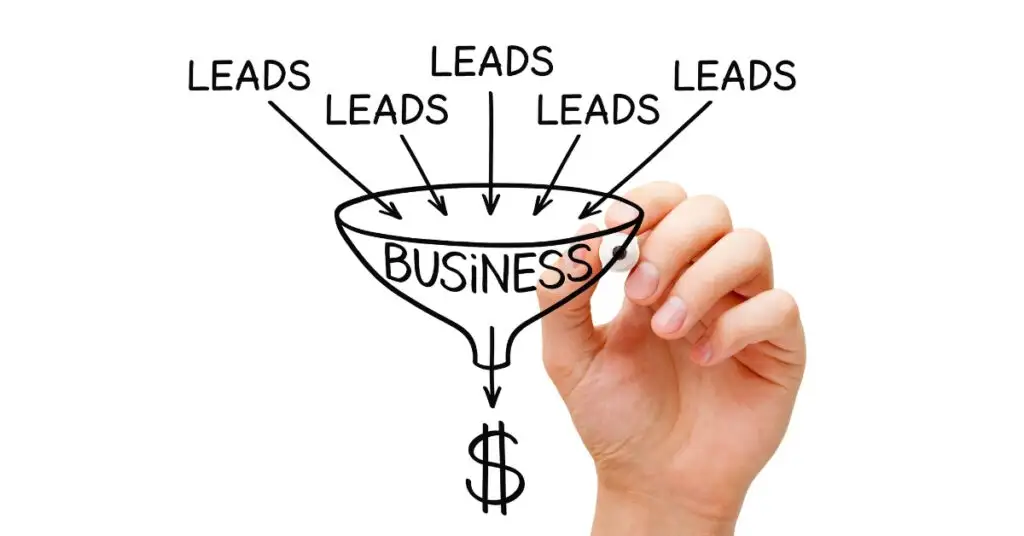
¿What is a ssales funnel?
A conversion funnel is a “virtual machine” that guides your visitors on the path to purchase, turning your website into a 24/7 business.
In other words, it’s a pre-designed automated process through which you lead the user from the moment they discover you until the phase where they become a customer by purchasing your product.
It’s called a funnel because it creates a sort of filter, where out of 100% of users who discover you, a smaller percentage will convert into customers.

Before the Conversion Funnel
A website, social media platforms, or an app should be viewed as a virtual branch if you truly want to succeed with a digital marketing strategy.
This means that before designing a website, you must analyze what its objective will be. Remember, we’ve already discussed the importance of knowing the “why” in marketing, as it’s about finding the most effective tools for your organization.
This is crucial because, when you think of your website as a virtual branch, you need advice on everything that building the page entails. For instance, depending on your objective, you should consider aspects like hosting (web hosting), domain, content management system, copywriting, and many other elements that you will have to identify.
The same goes for creating social media accounts for your company. It’s not just about choosing between Facebook, Instagram, YouTube, or any others you can think of, but how they will strategically serve your target customer.
In this case, it’s about planning the content you want to implement on your social networks, how you will communicate with the customer, and generally, developing a plan that allows you to interact with them.
When building your virtual branch, you’ll also realize which other technical components you need, like newsletters, subscriptions (paid or free), pop-ups, file downloads, etc., that will add much more functionality to your page.
There are many types of websites, such as transactional or informational, but it depends on what your company sells and how you will use your page.
For example, if you sell products, the website will serve for online and offline sales, so you must have an integrated payment system. Conversely, if you sell services, your site can serve more to provide information and bring the customer closer to the sale.
Your website, social media, and/or apps you want to implement for your company will be needed to conduct all your operations digitally, regardless of whether the final transactions are online or offline.
At this stage, the recommendation is to start with a website and social networks, as developing specific mobile apps for download is much more expensive and less practical if you do not yet have a loyal customer base.
Stages of a marketing Funnel
1. Acquisition
Bring users to your website, app, and social media.
Good marketing articulates the transition from a state of absence to a state of satisfaction: moving from a state of “before” to a state of “after”.

Most companies fail, especially during the startup phase or when entering new markets, because either:
- The offering is not good, or
- The marketing is not good
To make an adequate value proposition to the market, it is necessary to conduct a study in which you can deeply understand the types of customers and their needs. Afterward, you can perform a characterization that allows designing an offer coherent with each niche.
Once the product is determined, you need to define how much to charge for it. As we have already mentioned, customers want to go from a state A to a state B, and this distance represents the value you will assign to the product.
If you want to charge a high value for your products, you must increase the distance between point A and point B:
- Create a better product (improve the offering)
- Improve the points of contact and influence in marketing
All this will be taken into account once you have created the virtual branch (website, social networks, etc.) with which you will start the conversion funnel strategy. The first step is to attract people to this virtual branch, just as you do in an offline strategy (attracting users to go to your physical space).
Now, regardless of the size of your company, one of the most used strategies to attract users is advertising, which has many channels such as radio, print advertising (newspapers, magazines, flyers…), television, etc.
Internet advertising is about generating segmented traffic, like buying visits from people who we already know are interested or have an intention of something.
There are multiple ways to bring people to the business using the Internet. The two main ones you’ll learn about here are SEO (Search Engine Optimization) or organic positioning and SEM (Search Engine Marketing) or marketing in search engines.
When you develop an SEO strategy, it involves work and planning, as it’s about getting your website to appear among the top search results in Google (or any search engine).
SEO is organic growth, which occurs gradually, so you must adjust details that in digital language will translate into clicks and attracting people to your business.
While developing an SEO strategy does not require a direct investment in Google (as you will see in SEM), you should invest in content development, designs, etc., although it is a long-term plan.
In SEM, it’s about paying for advertising to generate much more user traffic. This advertising can be paid for through Google Ads, Facebook, Twitter Ads, Instagram, etc.
The big difference between the two alternatives is that by paying for advertising, it immediately appears on the network, so users will see it on their social networks or in search engines, results of your page or your products, because you have invested for it to appear first for a specific time.
Now, if for example, you have already invested in “offline” advertising (flyers, newspapers, advertising signs), you will realize that among the benefits of doing it online is that people can interact with the message you send.
This means that when we see online advertising that catches our attention, we can immediately click and go to the product or service page. So, when you pay to appear in searches, what you are doing is bringing a segmented audience to the website.
Two of the main advertising networks are Google and Facebook. To know which is most suitable for what you are looking for, we will tell you what the differences between them are.

Advertising on Google is based on keywords, meaning it operates based on the user’s search intention. Users enter keywords because they already have a need to satisfy or a specific interest in finding a product or service that meets their desires.
For this reason, paying for advertising on Google can be much more effective because you are one step further in the relationship with the user, as they are the ones initiating the search.
As for Facebook, advertising is also very effective but its segmentation is done differently. On this social network, advertising reaches the user based on interest, not intention. This means it attracts a variety of audiences who, probably through their interactions on social networks, have seen or identified something related to your product that catches their attention at that moment.
It’s the type of advertising you encounter when you enter your social networks, and you see ads for products you’ve searched for that week or that the internet has identified you have certain search patterns for, making you a potential customer interested in that product or service being offered.
In general, there are many sources for generating traffic, such as:
- Email marketing
- Social Advertising (Facebook/Twitter/YouTube ads, etc.)
- Banner Advertising
- Blogging
- Organic Social Media
- SEO
All platforms are available to drive traffic to your website and to generate brand visibility. It’s important to choose the platform with the most relevant traffic for your business and one that can be sustainable in the long term.
2. Activation
The main goal in this stage is to convert visitors into prospects.
Once you have started to generate traffic to your virtual branch, implementing strategies from the first stage of the conversion funnel, you must find a way to turn these people into prospects.
A prospect is a person who fits the profile of your ideal customer, a topic we have already discussed in the creation of archetypes that work for what you sell and how they should align with your products.
An ideal customer becomes a prospect for your product when, in addition to satisfying a need or desire that fits the profile you created for your company, they can also afford to buy your product.
It’s necessary to understand:
- How to measure the value generated by traffic.
- How to extract the maximum value from the generated traffic in the shortest possible time.
The goal, regardless of the chosen traffic source, is to funnel as many prospects as possible into the sales funnel.
Since you’ve already advertised to people who have a purchase intention (on Google or other search engines) or to people who have interests related to what you sell (on Facebook or other social networks), this is the first way to segment your target audience.
When these people arrive at your virtual branch or website, you must ensure they make a purchase. At this point, it’s important to take a small step towards obtaining data from these people, which will help you to know and profile your prospects even more.
For this, it’s important to implement a lead magnet, which is content you offer for free in exchange for people’s data (name, email, etc.).
When implementing a lead magnet, you must be creative and strategic, so that people are truly interested in receiving what you are offering for free. This will benefit you by allowing you to profile your prospects based on the information they provide.
For example, if you just put up a subscription box without indicating what it’s for, what the person will receive, or why it matters, it won’t motivate them to enter their data.

Contrary to the example of the following image, which functions as a good lead magnet, this person is offering a specific product in line with what they are selling.
For your company, you will need to identify what prospects can receive in relation to your product or service that provides them with valuable information they didn’t have before but will find useful.
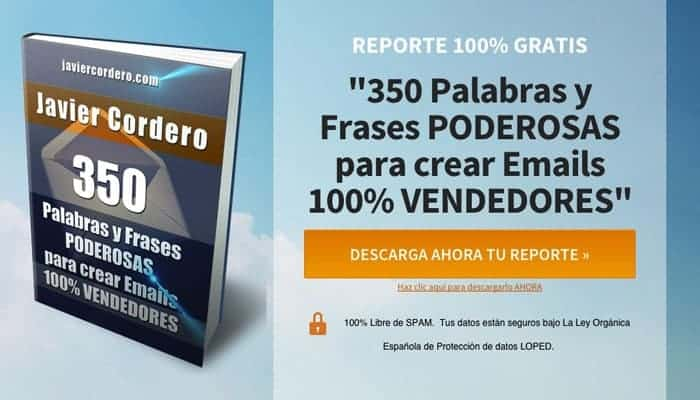
Often, we as users decide not to provide our data if we’re not sure about what we’ll receive, especially if we think it might be SPAM. Therefore, you must ensure that the content you offer in exchange for their information is genuinely valuable and useful to your customers.
In conclusion, a lead magnet will help you generate value in advance, as well as establish a trusting relationship and closer engagement with the visitors to your page. They will become prospects once they agree to download what you offer in exchange for their data.
3. Retention
The primary goal is to engage your users.
Closing the first sale is always the hardest, which is why it’s important to align objectives in seeking to establish a relationship with your customers.
In this third step, what you’ll do is “enchant” the lead or prospect into becoming your customer, using a sales tool called a tripwire.
A tripwire is a low-cost, low-risk offer that reduces the friction of asking someone for money for the first time.
This is the most important stage of the conversion funnel because this is when you want most of the prospects you’ve identified to become customers and stay with your brand.
Social networks play a very important role in this technique. If you have good management of networks that allows the customer to get closer to your brand, so they become more interested in your product or even identify with it.
Without adequate strategies to implement this step, you run a higher risk of losing more prospects than you’d like.
The advantage of social networks is that you can publish all kinds of content that is attractive to those prospects. On these channels, you can share corporate videos, tutorial videos, informational videos, blog posts, graphic pieces…
The possibilities are completely open to what you want to show and the type of customer you want to have.
The main objective of this step is to change the relationship you have with your audience or community, from prospect to customer. So, the content is made to enchant people, to make them realize that it is of quality and relevant to them.
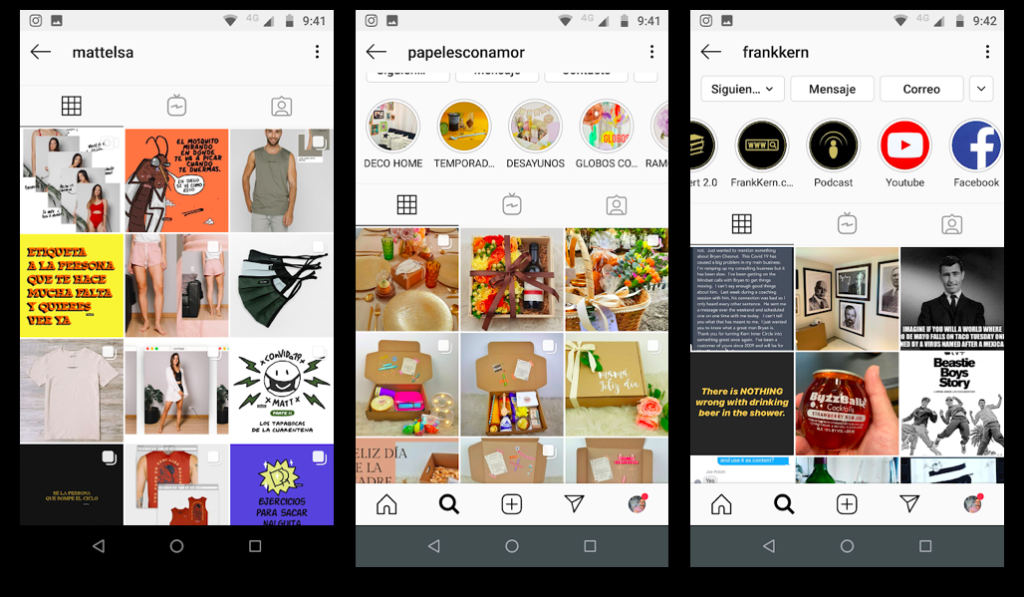
Here, we present only three examples of Instagram accounts that can help you identify uses of social networks according to what the brand seeks.
In the first box is Mattelsa, a Colombian clothing store that presents itself on Instagram in a fun and creative way, attracting its audience with posts that help them identify with the brand.
In the second box is Papeles con Amor, focusing on a sales strategy with high-quality images centered on the product. For example, they use Instagram Stories to showcase moments that appeal to their audience.
In the third place is the account of Frank Kern, a digital marketing expert. We recommend following him on his social networks, as he focuses on offering a relationship with his clients from an informative perspective, providing more educational content.
As we mentioned before, it’s important to choose social networks that best fit what you want. Each one should have a meaning and a purpose.
Another widely used network for certain types of products and services is YouTube. Here, we show the example of Neil Patel’s channel. He is also a digital marketing expert, who, if you don’t already know, will be very useful to follow. His channel generates very high-quality and completely free content.
In this example, we see a course on how to do SEO that he uploads in episodes. Users can access his videos for free, so once they become his clients, they have already established a certain level of trust with what he offers as a marketing consultant.

With the tripwire, you present a low-cost, low-risk offer to those who have shown initial interest in the offer.
We recommend making an irresistible offer before the main offer, due to the positive long-term impact it can have.

The most common way to make a tripwire irresistible is to offer it at production cost or even at a loss. In this example of Disney Movie Club, they offer 4 movies for $1 when you create your annual membership for the first time.
The purpose of a tripwire is to acquire customers, as they are much more valuable than prospects. Moreover, there will be other opportunities to offer them products again, so the focus is not solely on increasing sales.
While using a tripwire increases the long-term value of a customer, its main application is in products of high value or risk.
This doesn’t mean that your business can’t try to sell immediately to its customers without a tripwire. However, for this to happen, your lead magnet needs to be very relevant and aligned with your service.
It’s not mandatory to implement a tripwire if you can engage your prospect with your content. It’s recommended to use it when your product or service is more expensive. Hence, the role of social media is crucial in generating engagement, commitment, and retention.
4. Monetization
Make direct offers of your product.
Marketing has a dual responsibility, as it must seek to satisfy the customer, but it is also important to satisfy the needs of the company.
The fourth step of the conversion funnel is precisely to generate offers that allow you to make the sale, because by this point, you have achieved significant milestones like defining the product, defining the advertising, characterizing the ideal customer, and understanding the competition.
Additionally, you have created channels to access prospects (website, social networks) and have offered them value in advance with one or several lead magnets or a tripwire. So, in the monetization stage, the goal is to convert those prospects you already have into customers.
At this point, what you will do is finalize the sale, be it online or offline, according to what you offer.
Here we come to understand new concepts that are important for you to consider.
For example, if your company is service-based, a lead magnet will precisely help in seeking to arrange an in-person visit to try to generate the offline sale.
When you want your customer to make the purchase through Internet platforms, you are developing an e-commerce business model (where buying and selling always occur on the Internet). For this, it’s necessary that your website integrates a shopping cart, various product details, company information, a payment gateway, a home delivery system, etc.
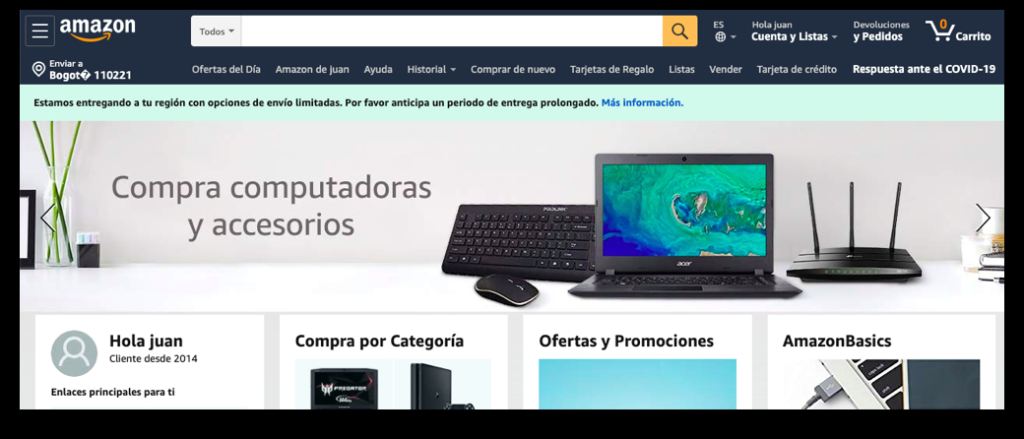
There are also other digital products that can be sold online, such as e-learning (online courses), entertainment, apps, and many more.
5. Viralization
…And profit maximizers
The most expensive part is generating traffic, which is the path you’ve been on up to this point. Remember, first you have users who are searching online, then they become visitors when they enter your page, and when they decide to leave you their data in exchange for something (in the lead magnet), they transform into prospects. Finally, when the sale is finalized, they become customers.
It’s important to understand the differences in each of these classifications of the audience we have. Companies with the resources and capacity can develop strategies directed at each of these segments. Even though they don’t generate the same value for the company, they should concentrate their efforts on the transition from prospect to customer and subsequently focus on the quality of your attention to the customers.
The main thing to keep in mind here is that the customer might not know all the products or services you offer, in addition to the one they are interested in. Thus, there are certain types of sales strategies that will allow you to expand that spectrum with the customer by offering more products.
There are many ways to maximize profits, and here we will look at some of the techniques you can use, according to what you sell. One option is viralization, as we want to sell more to more people without investing in advertising. An example of this is when you design a contest on social networks, where you ask your prospects to mention other people in the post, like the contest image, etc.
Another way to maximize profits is through cross-selling or tiered selling, and one of the examples we can mention here is McDonald’s strategy, which uses both techniques in its points of sale.
This fast-food chain found that there was a need for a specific population, so it automated its production processes to improve customer service, adding products to its menu.
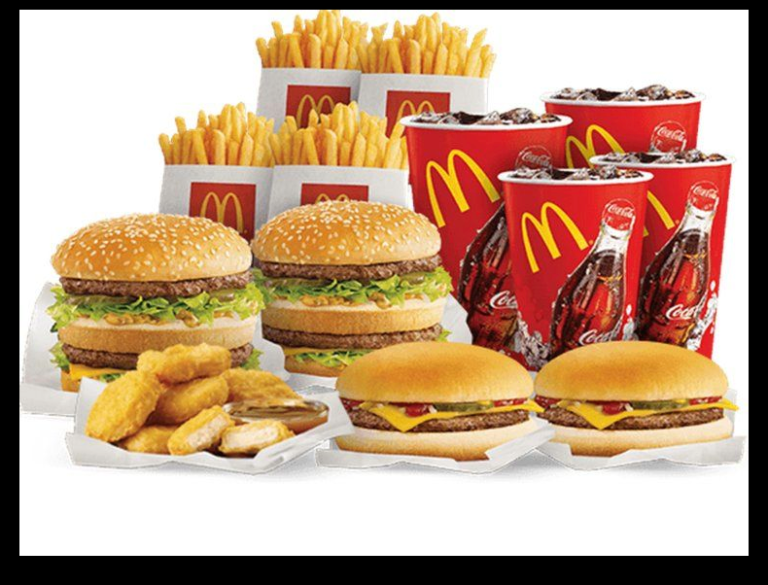
McDonald’s is a pioneer in cross-selling and tiered selling, as when you go to buy a hamburger, they offer you to add a soda, fries, etc. (cross-selling), and then they ask if you want to “supersize” each of the products in the combo (tiered selling).
So, a customer who was potentially going to pay just for a hamburger ends up paying a bit more to get other products that capture their attention due to price, convenience, and speed. This is what sales maximization is all about.
The goal of profit maximizers is that the customer is satisfied because they got more than they expected from purchasing your product, and the company, in turn, achieves more sales than expected.
Makeup and supplement companies do this all the time. An example is the sales and loyalty strategy of Natura (a Brazilian health and beauty products company that sells through catalogs).
Natura has been expanding in Latin America, seeking customers who not only like their products but can also identify with their corporate philosophy of using environmentally sustainable products. In their sales strategy, they propose that on the first purchase, you get the original container the product comes in, but from the second purchase onward, you pay much less if you choose to buy just the refill.
Here, the customer knows that on their next purchase they will spend much less for the same amount and also aligns with the company’s environmental care premise.
Maximizers are a win-win strategy with the customer, as you guarantee not only the first sale but also add value by including other sales with the same customer, who can also identify with your brand and promote it to people they know.
There are multiple ways to maximize profits according to what you sell, so you can use creativity to identify those maximizers that best fit your company, considering institutional values, product characteristics, and the type of customer you expect.
Profit maximizers within the digital marketing strategy can facilitate increased sales with the customers you already have without having to invest much more in acquiring new ones.
Conclusion
Conversion funnels are nothing new; they are how sales strategies in offline businesses have been generated for years. The best example, as we saw, is McDonald’s.
A conversion funnel is a set and predetermined process in which a business generates sales. However, with the advent of digital tools, implementing and especially measuring it becomes much more complex.
Juan Esteban Yepes
